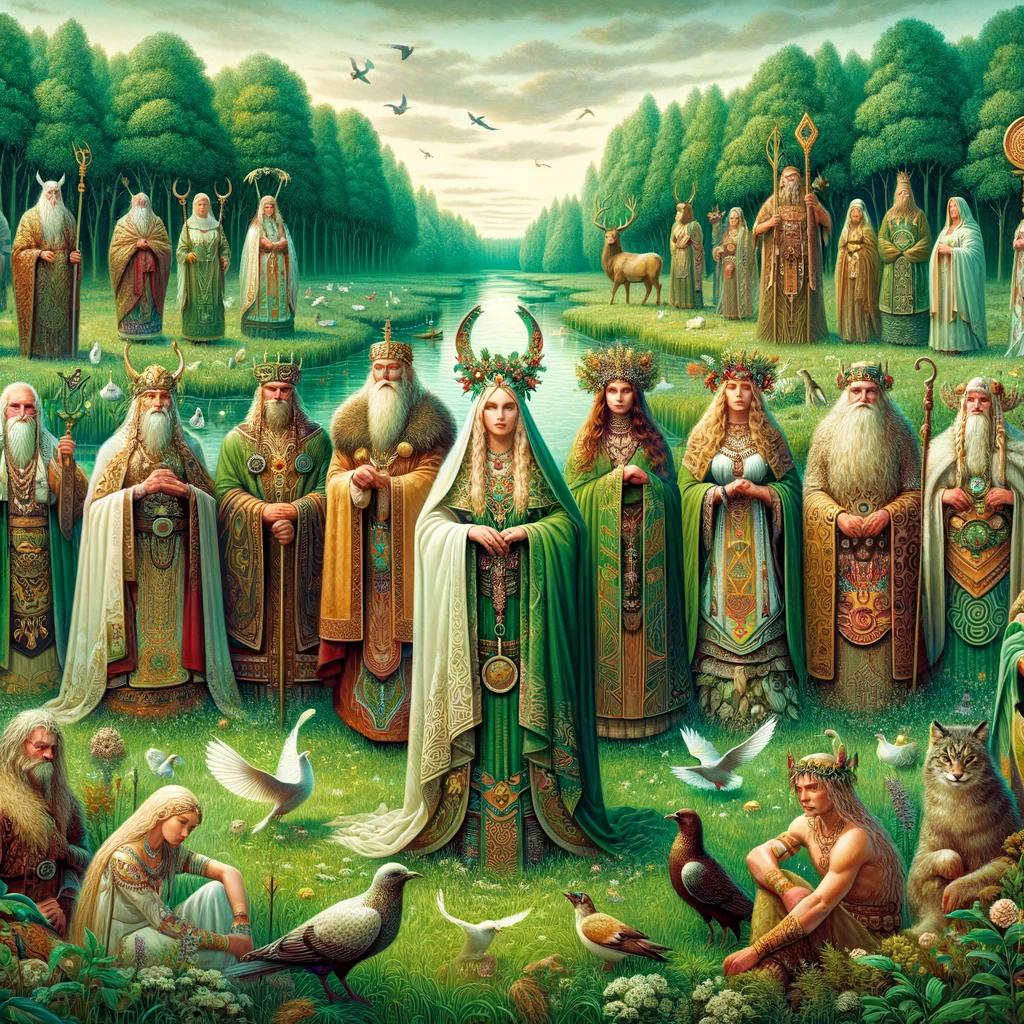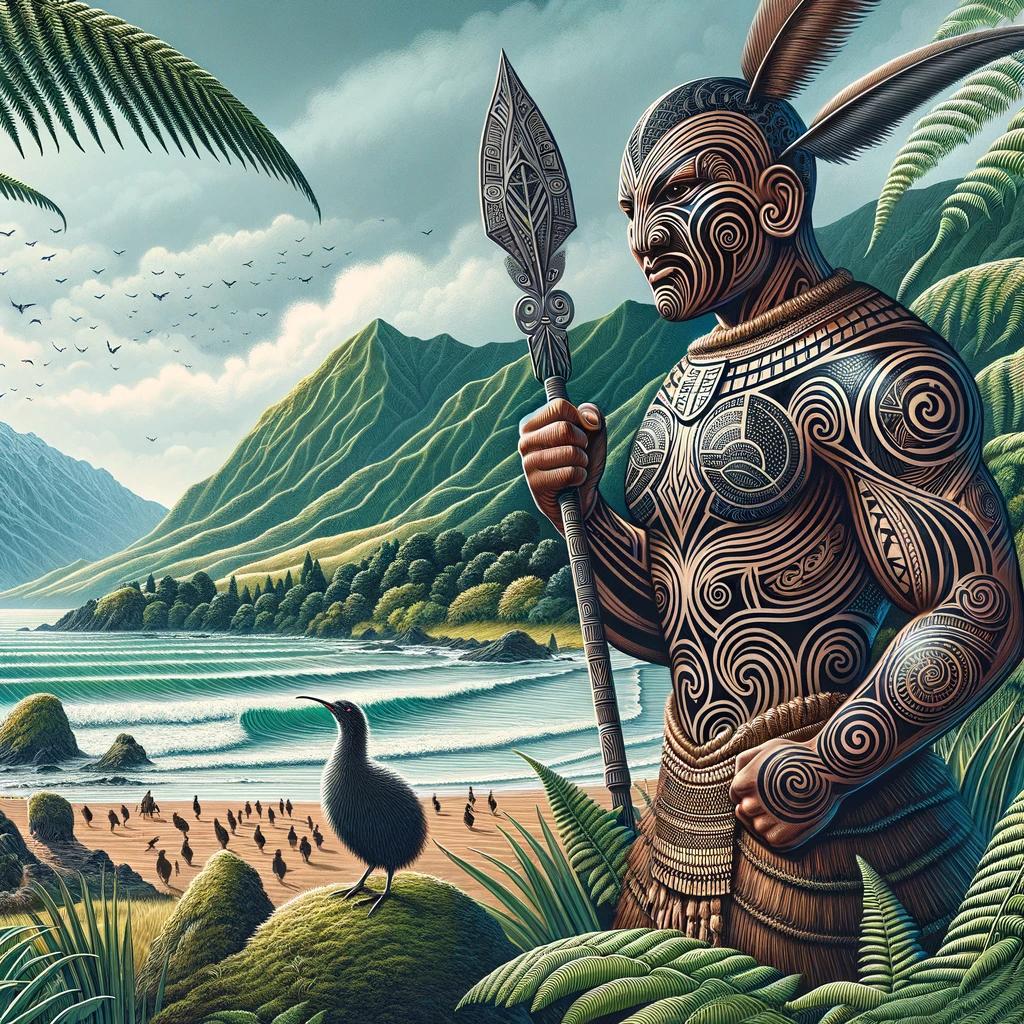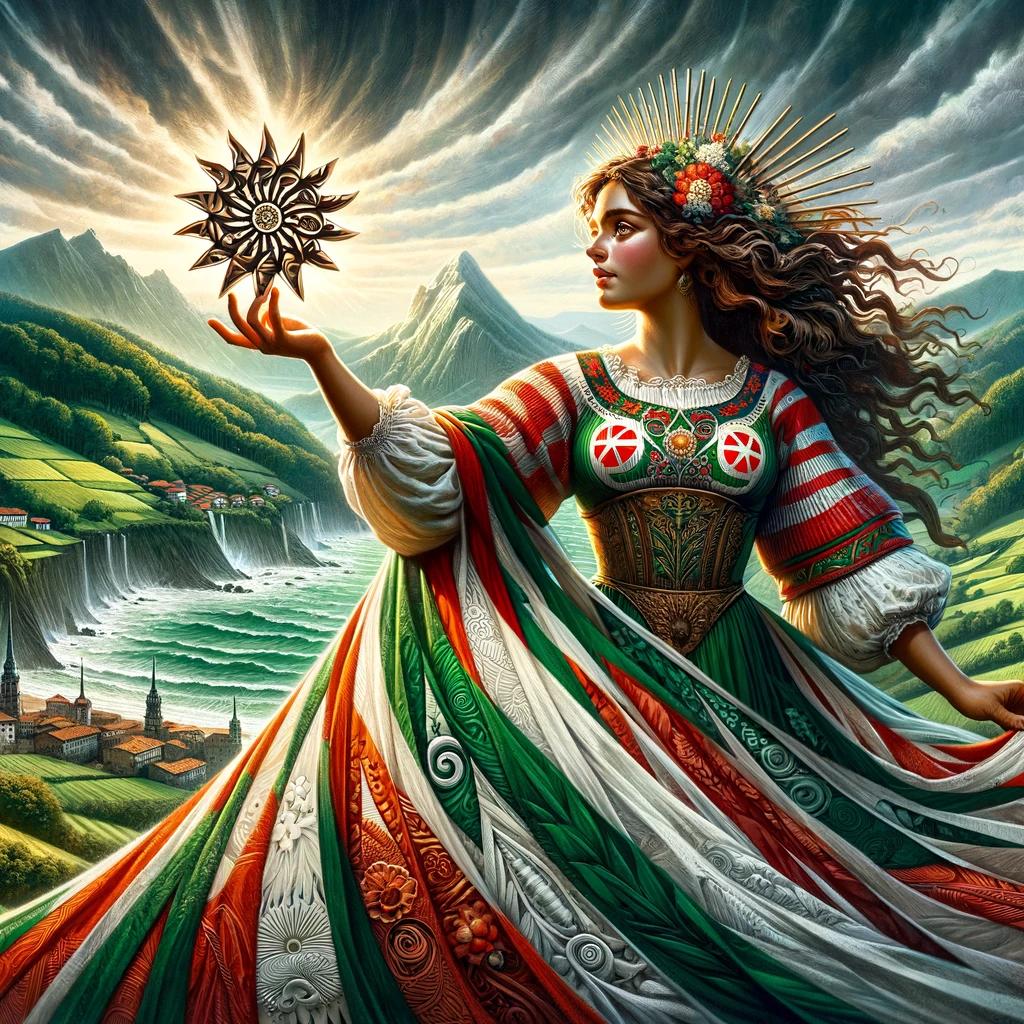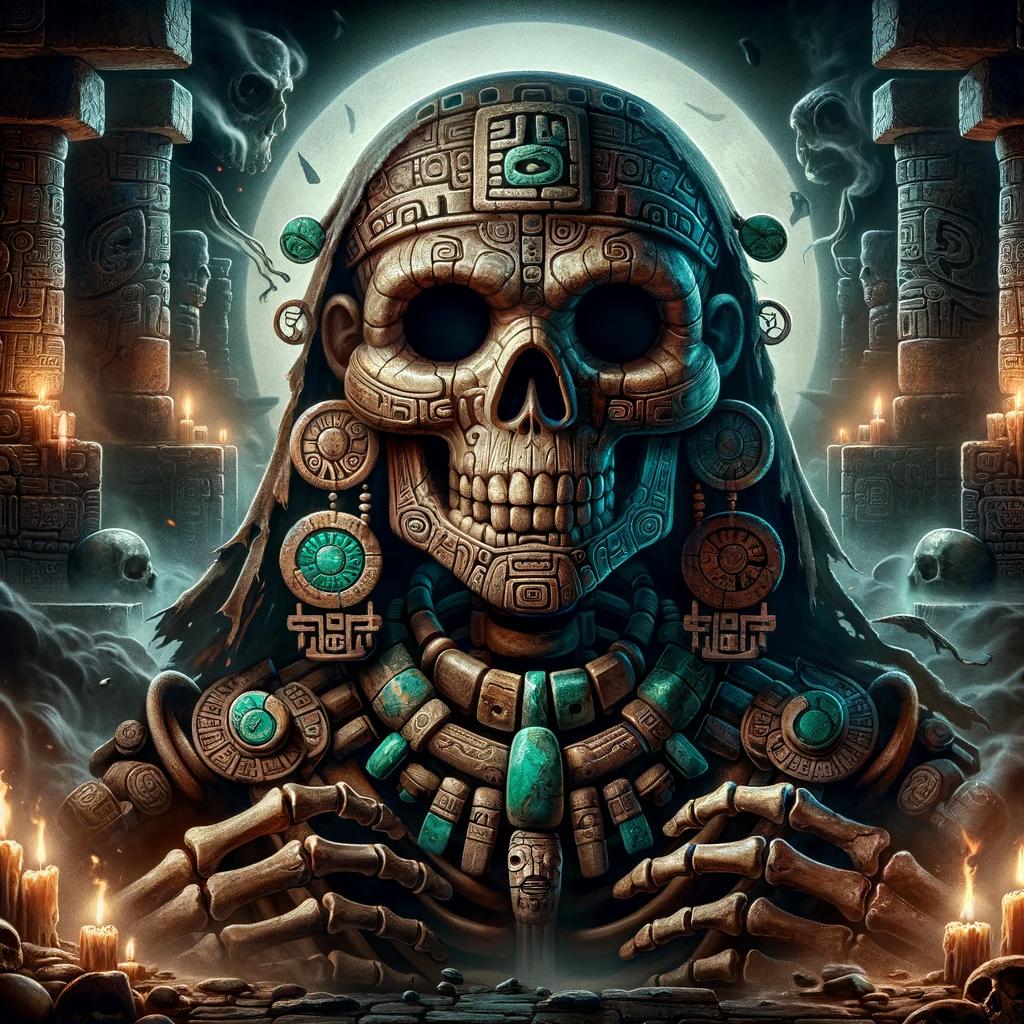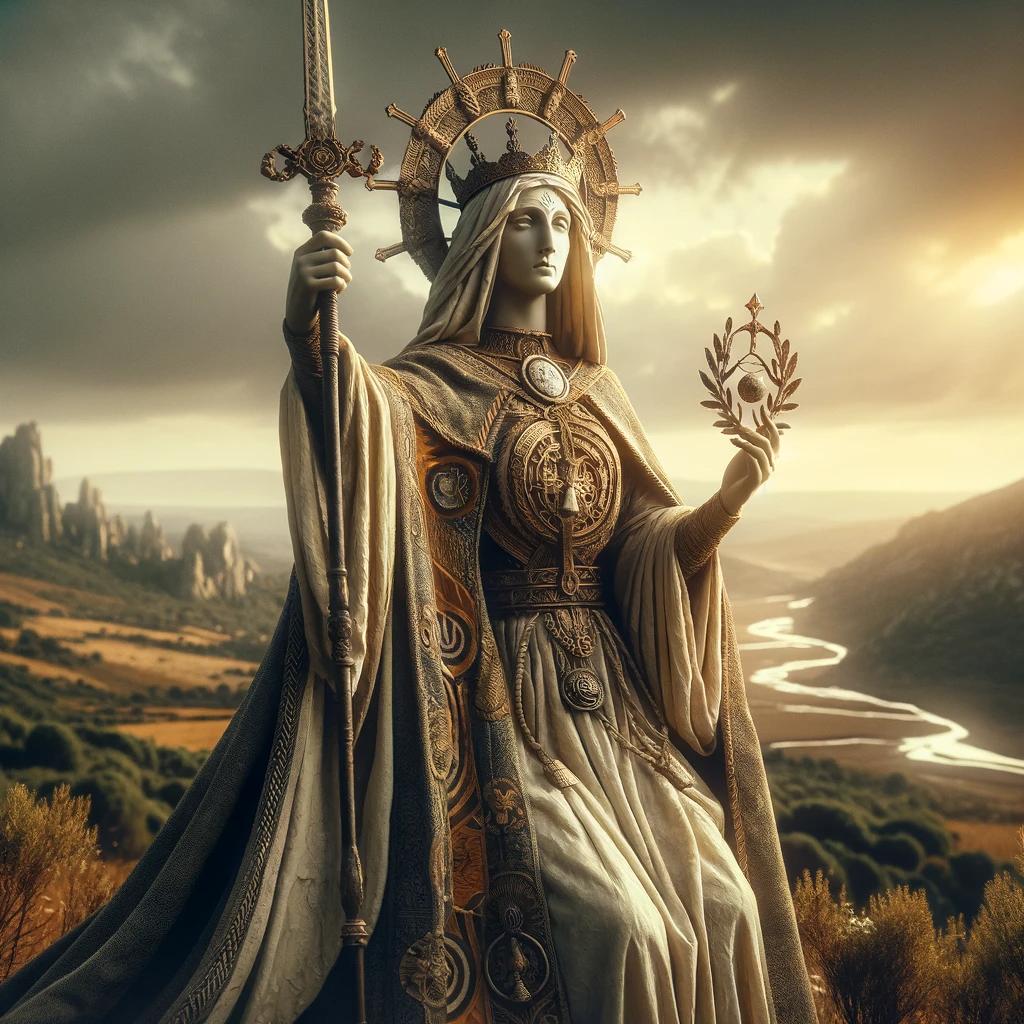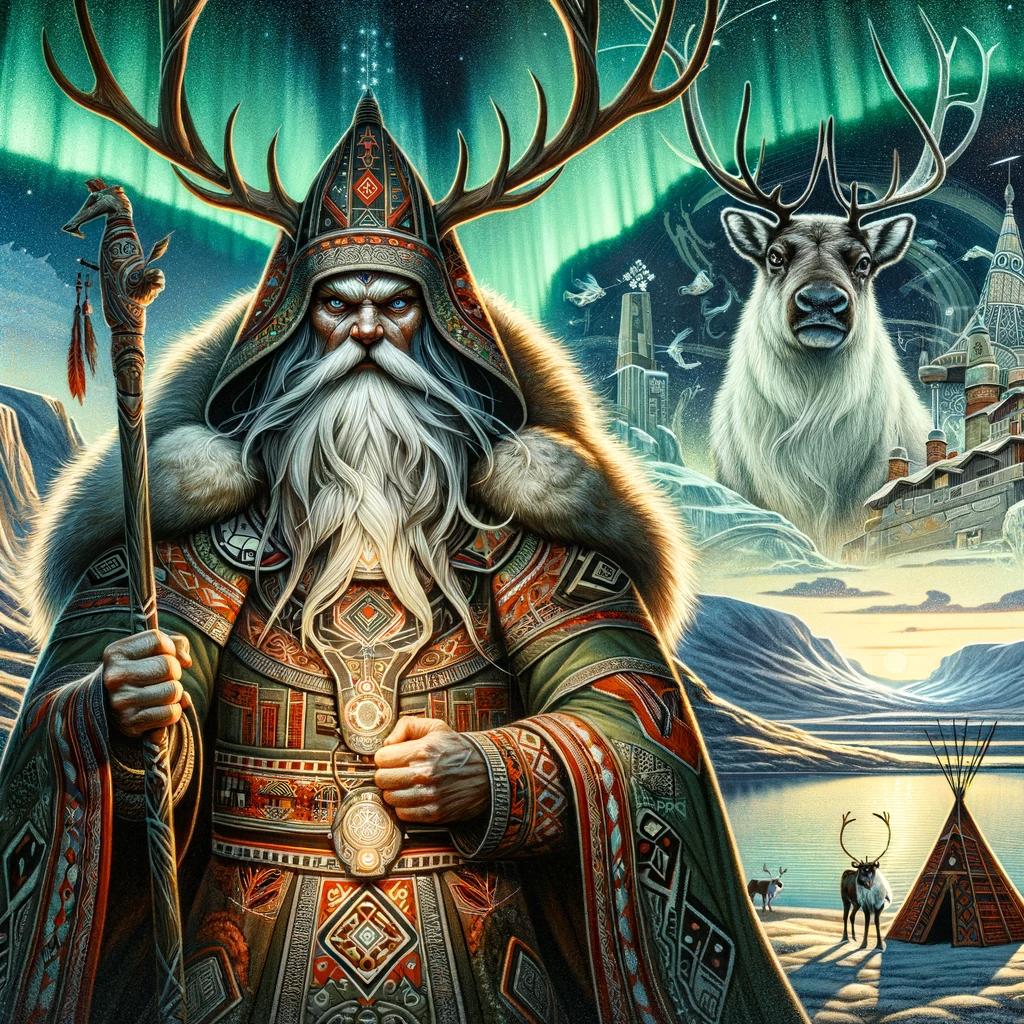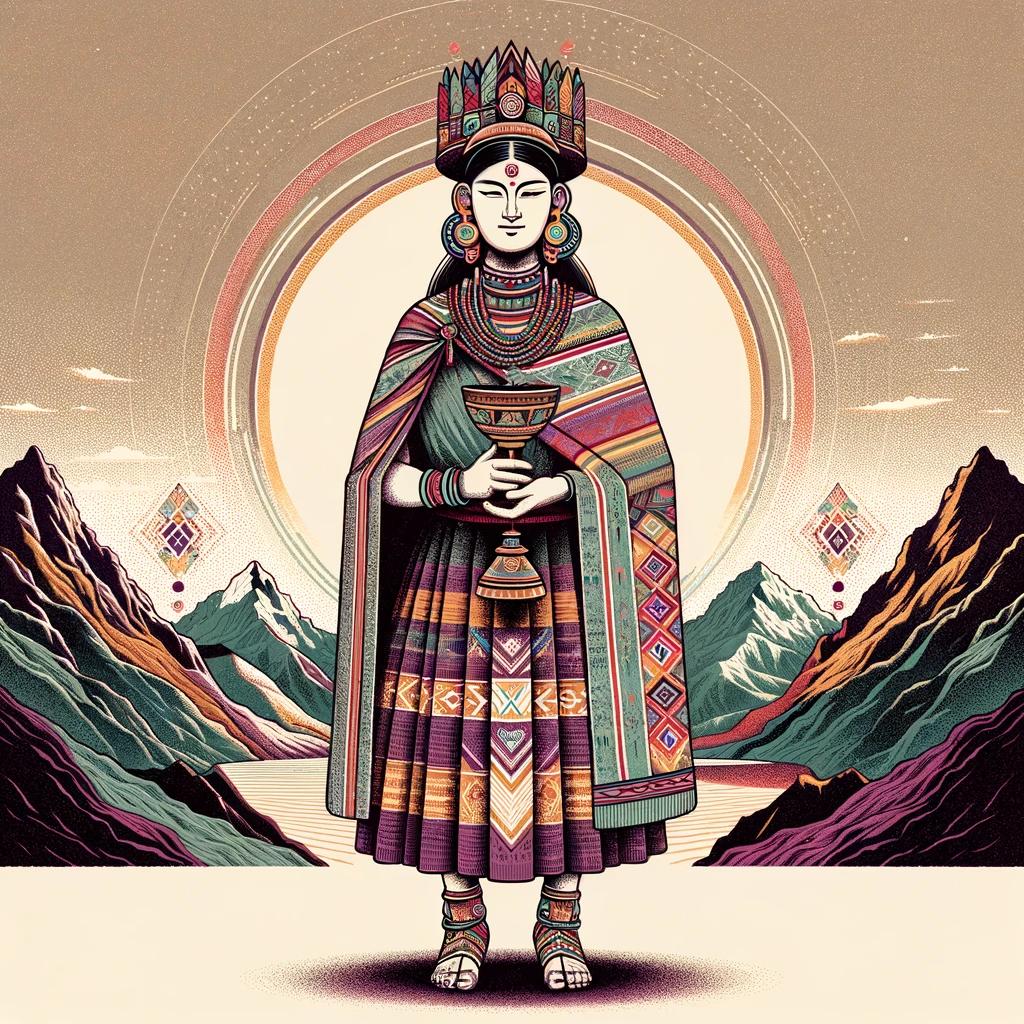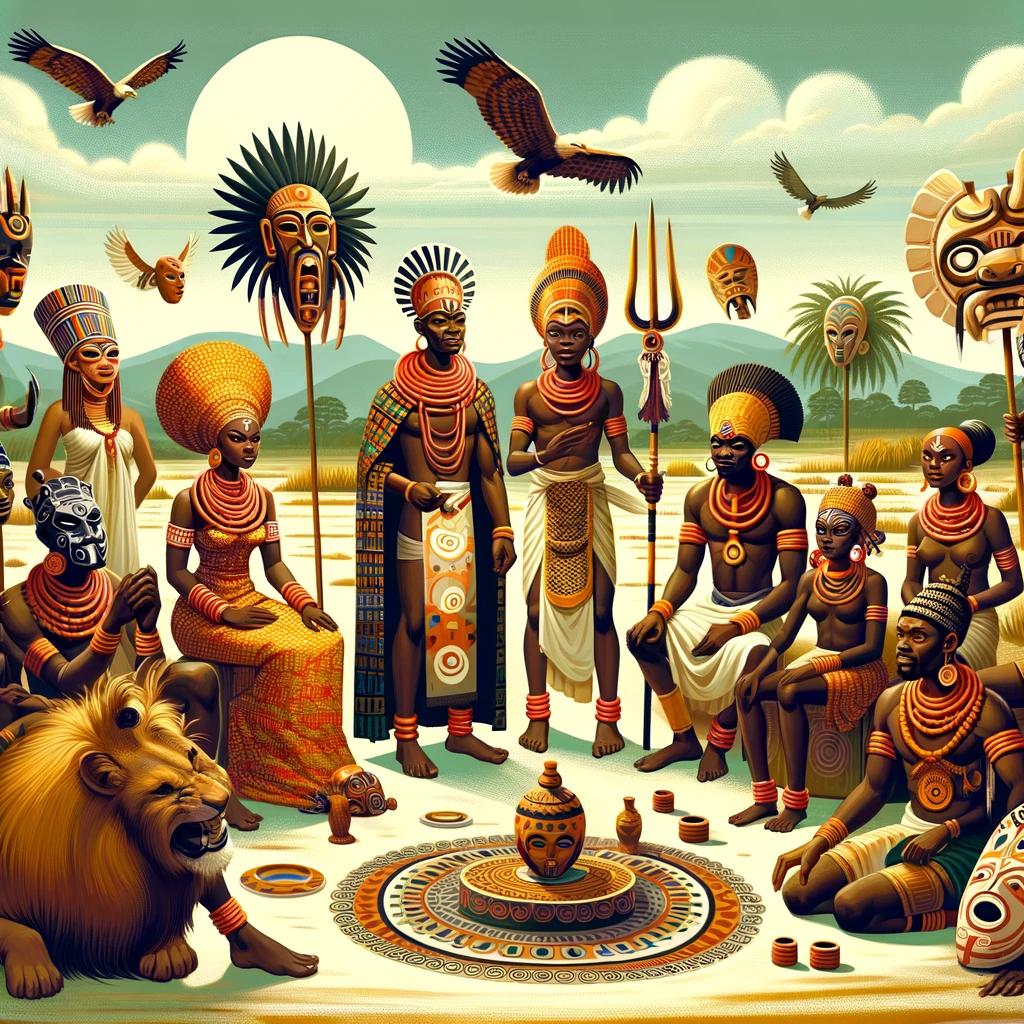Baltic Mythology Gods and Goddesses: Discover the Ancient Deities of the Baltics
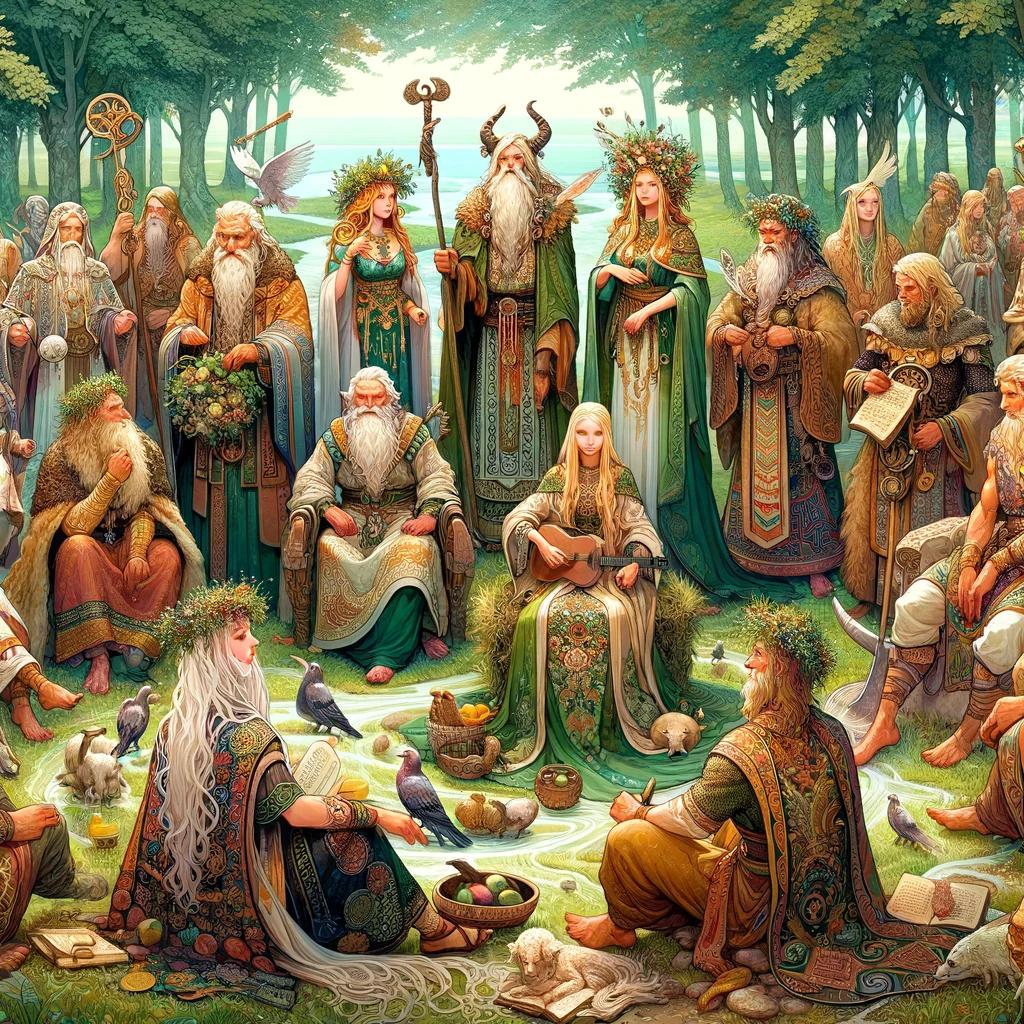
Baltic mythology is a fascinating realm of gods, goddesses, heroes, and enchanting folklore. The rich heritage of Lithuanian deities, influenced by scarce written sources and later folklore, reveals a diverse pantheon of divine and mythological figures.
From the supreme god Dievas to the goddess of fate and luck, Laima, and the powerful god of thunder, Perkūnas, each deity possesses unique characteristics and is revered in Baltic mythology.
This article explores the origins, pantheon, heroes, heroines, and captivating folklore of Baltic mythology, shedding light on its significance and revival in modern times.
Origins and Influences of Baltic Mythology
The origins of Baltic mythology can be traced back to the ancient Baltic tribes inhabiting the region of modern-day Lithuania, Latvia, and Estonia. These tribes, deeply connected to nature and their environment, developed a complex belief system centered around gods, goddesses, and mythological beings.
Baltic mythology was heavily influenced by the surrounding cultures and civilizations. The Balts interacted with various groups, including the Vikings, Indo-European peoples, and neighboring Slavic tribes. Over time, these interactions resulted in the fusion of different mythological elements, creating a unique Baltic mythological tradition.
The influence of neighboring cultures can be seen in the similarities between Baltic mythology and other ancient belief systems. For example, there are parallels between Baltic and Norse mythologies, especially in their deities associated with natural phenomena such as thunder and lightning.
The close relationship between Baltic mythology and nature is a defining characteristic of this belief system. The people of the Baltic region revered the forces of nature, attributing divine qualities to natural elements such as the sun, the moon, the earth, and the wind.
This deep connection to the natural world shaped the pantheon of Baltic gods and goddesses, reflecting the importance of the environment in their lives.
- The Baltic mythological tradition encompasses a rich collection of deities, each governing different aspects of life and nature.
- Dievas, the supreme god, holds the highest position in the pantheon, representing the cosmic order.
- Laima, the goddess of fate and luck, is revered as the bringer of fortune and protector of destiny.
- Perkūnas, the god of thunder and lightning, embodies the power and relentlessness of nature’s forces.
- Saule, the goddess of the sun, symbolizes warmth, life, and vitality.
- Žemyna, the goddess of earth and nature, is venerated as the nurturing and life-sustaining force.
- Gabija, the goddess of fire and protection, guards the hearth and brings warmth and safety to homes.
- Ašvieniai, the divine horse twins, represent the passage of time and the cycle of seasons.
- Dalia, the great goddess, encompasses fertility, prosperity, and harmonious existence.
These deities, among others, form a complex and multifaceted pantheon, elevating natural elements and embodying various aspects of human experience and the surrounding world.
As we delve deeper into the mystical realm of Baltic mythology, we will explore the stories, myths, rituals, and heroic figures that shape this rich and vibrant tradition.
The Pantheon of Baltic Gods and Goddesses
Baltic mythology is filled with a rich pantheon of gods and goddesses, each with their own unique roles and powers.
These divine beings are revered and worshiped in the Baltic traditions, encompassing a wide range of deities that played significant roles in the ancient Baltic culture. Let’s explore some of the prominent deities in the Baltic pantheon:
Dievas: The Supreme God in Baltic Mythology
Dievas holds the position of the supreme god in Baltic mythology, governing over the entire pantheon.
He is associated with the sky, natural phenomena, and the well-being of all living beings. Dievas symbolizes power, wisdom, and protection, embodying the ultimate ruler of the divine realm.
Laima: The Goddess of Fate and Luck
Laima is the goddess of fate and luck in Baltic mythology, often depicted as a benevolent figure who shapes the destinies of individuals.
She brings good fortune, guides paths, and determines the outcome of events. Laima is highly revered and sought after for her influence over personal and collective prosperity.
Perkūnas: The God of Thunder and Lightning
Perkūnas holds the power of thunder and lightning, representing strength, courage, and protection.
As the god of storms, he safeguards against evil forces and ensures the balance of nature. Perkūnas is an embodiment of power and vitality in Baltic mythology.
Saule: The Goddess of the Sun
Saule is the radiant goddess of the sun, bringing light, warmth, and life to the world.
She is associated with fertility, growth, and rejuvenation. Saule’s presence in Baltic mythology signifies hope, energy, and the cycle of nature.
Žemyna: The Goddess of Earth and Nature
Žemyna is the goddess of the earth and nature, symbolizing abundance, fertility, and sustenance. She is revered as the provider of crops, animals, and natural resources. Žemyna’s connection to the land highlights the importance of harmony and respect for nature in Baltic mythology.
Gabija: The Goddess of Fire and Protection
Gabija is the guardian goddess of fire, representing warmth, transformation, and protection. She is believed to reside in hearths and fireplaces, safeguarding homes and families from harm. Gabija’s presence brings comfort, security, and the transformative power of fire.
Ašvieniai: The Divine Horse Twins
Ašvieniai are the divine horse twins in Baltic mythology, associated with fertility, speed, and power. They are often depicted as white horses, symbolizing purity and spiritual connection. Ašvieniai represent the harmony between humans and nature, embodying the vital role of horses in Baltic culture.
Dalia: The Great Goddess of Baltic Mythology
Dalia is the great goddess of Baltic mythology, encompassing various aspects of life. She represents femininity, beauty, wisdom, and sovereignty. Dalia is a versatile deity, associated with creation, love, and governance, holding a central position in the Baltic pantheon.
Heroes and Heroines in Baltic Mythology
Heroes and heroines play a significant role in Baltic mythology, embodying bravery, wisdom, and protection. These revered figures hold a special place in the hearts of the Baltic people, and their stories continue to be passed down through generations.
Žvaigždės: The Warriors of the Stars
Žvaigždės, known as the Warriors of the Stars, are legendary heroes in Baltic mythology. These celestial warriors are believed to guard and protect the heavens, ensuring balance and harmony in the cosmos.
Their valor and skill in battle make them symbols of courage and loyalty.
Auštaras: The Morning Star Hero
Auštaras is a prominent figure in Baltic mythology, known as the Morning Star Hero. Often associated with new beginnings and hope, he represents the triumph of light over darkness. Auštaras’s story reflects the belief in the power of perseverance and the promise of a brighter future.
Bangpūtys: The Wind Storm Protector
Bangpūtys, also known as the Wind Storm Protector, is a hero revered for his ability to control and tame powerful storms. This mighty figure safeguards the Baltic lands from destructive winds, symbolizing the importance of balance between humankind and nature.
Deivės Valdytojos: The Goddesses of Healing and Wisdom
The Deivės Valdytojos, the Goddesses of Healing and Wisdom, are revered heroines in Baltic mythology. These goddesses possess immense knowledge and skill in both physical and spiritual healing. They guide and inspire individuals seeking wisdom, offering comfort and guidance in times of need.
Vėjopatis: The God of Wind and Air
Vėjopatis, the God of Wind and Air, is a heroic figure associated with the forces of nature. He commands the winds and breezes, providing the Baltic people with fresh air and favorable weather conditions.
Vėjopatis serves as a reminder of the delicate balance between humans and the natural world.
Vakarinė: The Evening Goddess Associated with Twilight
Vakarinė, known as the Evening Goddess, presides over twilight in Baltic mythology. As daylight fades, Vakarinė takes her place in the celestial realm, bringing calmness and serenity to the world. She embodies the beauty and tranquility found in the transition from day to night.
Folklore and Legends in Baltic Mythology
Exploring the rich tapestry of Baltic mythology, we delve into the captivating world of folklore and legends. Within this realm, we encounter a myriad of mythical creatures and spirits, tales of creation and destruction, as well as rituals and festivals that celebrate the vibrant Baltic mythology.
Mythical Creatures and Spirits in Baltic Folklore
Deep within Baltic folklore, a plethora of mythical creatures and spirits reside. These beings, such as the intriguing Velnias (the Devil) or the mischievous Laumes (fairies), play significant roles in ancient tales and beliefs.
Baltic mythology also includes beings like Aitvaras (a household spirit) and Pikuls (nature spirits), adding a mysterious and enchanting element to the folklore tradition.
Myths and Tales of Creation and Destruction
Myths and tales of creation and destruction form a crucial part of Baltic mythology.
These narratives reveal the origins of the world and its various elements. From the legend of the cosmic egg that birthed the universe, to the epic battles between gods and giants, Baltic mythology provides a captivating glimpse into the forces that shaped the cosmos and the ongoing struggle between order and chaos.
Rituals and Festivals Celebrating Baltic Mythology
The Baltic people have honored their ancient mythology through rituals and festivals for centuries. These traditions serve as a way to pay homage to the gods and goddesses, express gratitude for the bounties of nature, and seek blessings for the community.
Festivals like Joninės (Midsummer) and Rasos (St. John’s Day) involve bonfires, music, dancing, and various rituals, creating a vibrant and joyous atmosphere that keeps the spirit of Baltic mythology alive.
Modern Interpretations and Revival of Baltic Mythology
In recent years, there has been a growing interest in Baltic mythology and a revival of its ancient tales and traditions.
Modern interpretations and adaptations of Baltic mythology have found a place in various forms of media, including literature, art, music, and even film. This resurgence has allowed people to reconnect with their cultural heritage and explore the rich tapestry of Baltic gods, goddesses, and heroes.
Authors and artists have been inspired by Baltic mythology, incorporating its themes and characters into their works. Novels and short stories delve into the adventures of heroes like Žvaigždės, Auštaras, and Bangpūtys, bringing their epic quests to life.
These literary creations not only entertain but also educate readers about the fascinating world of Baltic mythology.
In the realm of visual arts, Baltic mythology provides a wellspring of inspiration. Painters and sculptors depict deities such as Laima, Perkūnas, and Saule in their work, capturing their mythical essence and preserving their imagery for future generations.
These artistic representations serve as a visual homage to the gods and goddesses of Baltic mythology.
Music has also been a powerful medium for expressing the allure of Baltic mythology. Composers and musicians draw upon the tales and legends to create enchanting melodies that evoke the spirits of the ancient deities.
These evocative musical compositions transport listeners to a realm where myth and music intertwine.
Furthermore, the revival of Baltic mythology has extended beyond art forms. Festivals and cultural events now highlight the traditions and rituals associated with Baltic gods and goddesses.
Participants dress in traditional attire, reenact ancient ceremonies, and pay homage to the divine beings who once held significant roles in Baltic society. These celebrations serve as a reminder of the enduring relevance of Baltic mythology.
In conclusion, the modern interpretations and revival of Baltic mythology have breathed new life into the ancient tales of gods, goddesses, and heroes. Through various artistic mediums and cultural events, people have reconnected with their roots, celebrating the captivating world of Baltic mythology and ensuring its preservation for future generations.
.











